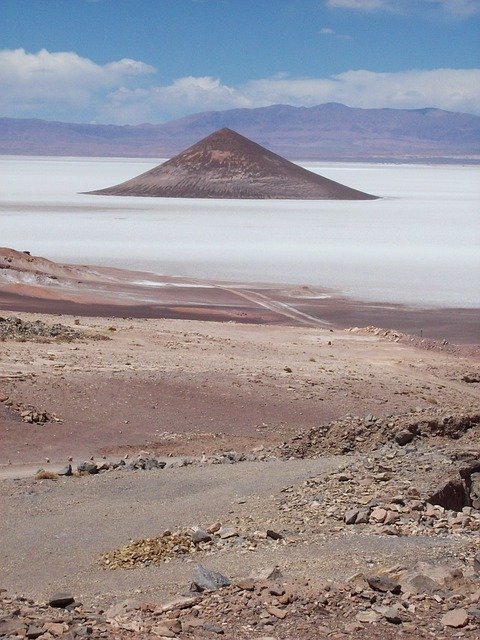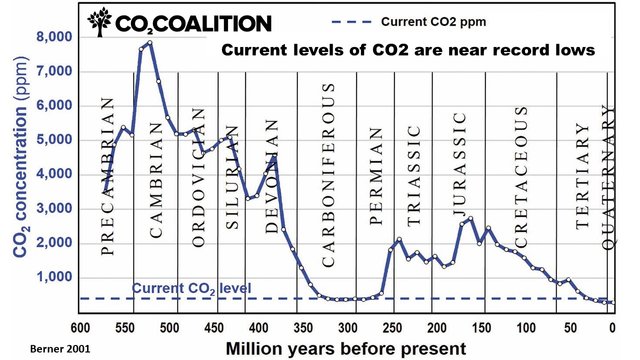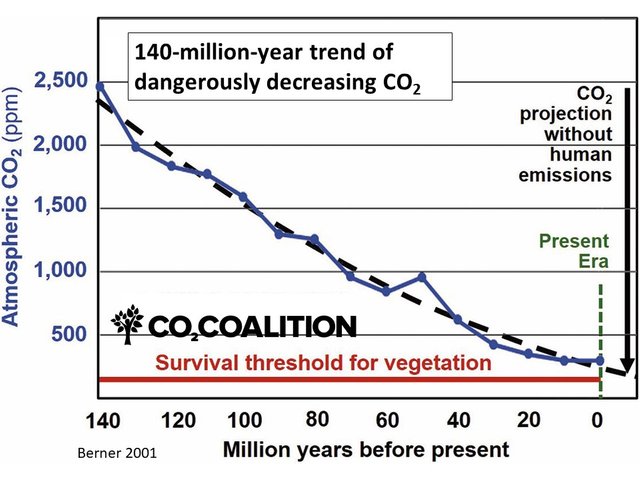
(thanks pixabay.com for the photo)
Introduction
The Earth's history is marked by cataclysmic events that have shaped the course of evolution and the diversity of life. Extinction level events (ELEs) have been instrumental in reshaping the planet, clearing the way for new species to emerge. In this article, we will delve into the major extinction level events in pre-history that have left an indelible mark on the Earth's geological and biological timeline.
- Ordovician-Silurian Extinction (443-443.8 million years ago):

The Ordovician-Silurian Extinction is one of the earliest known ELEs, wiping out approximately 85% of marine species. The causes are believed to be a combination of glacial activity, sea-level changes, and a drop in oxygen levels. This event paved the way for the rise of new marine life during the Silurian period. At the time of the extinction event, the amount of carbon-dioxide was about 0.5%. This gave plants an ample amount of fuel for photosynthesis early on.

Late Devonian Extinction (372-359 million years ago):

The Late Devonian Extinction primarily affected marine life, with an estimated 75% of species going extinct. Possible causes include climate change, anoxia (lack of oxygen), and asteroid impacts. This event marked a significant shift in marine ecosystems, allowing for the emergence of new species during the Carboniferous period. During this period the carbon-dioxide levels also dropped significantly. Starting with 0.3% rising sharply and then falling to what would become the norm for the next 250 million years of 0.2%.Permian-Triassic Extinction (252 million years ago):

Often referred to as the "Great Dying," the Permian-Triassic Extinction is the most devastating ELE in Earth's history. Approximately 96% of marine species and 70% of terrestrial vertebrates perished. The causes remain the subject of scientific debate, with theories including volcanic activity, asteroid impacts, and climate change. This event led to the rise of the dinosaurs during the Triassic period. During this period the carbon dioxide levels had been dropping from 0.2% to 0.18%.Triassic-Jurassic Extinction (201 million years ago):

The Triassic-Jurassic Extinction, though not as severe as the Permian-Triassic event, still led to significant changes in terrestrial and marine ecosystems. Around 80% of marine species and several terrestrial species went extinct. Potential causes include volcanic activity, climate change, and sea-level fluctuations. The Jurassic period saw the dominance of dinosaurs and the evolution of new species. The carbon-dioxide levels in the Jurassic period rose and fell; averaged around 0.2%; and finished with this extinction event with more in the atmosphere than it had started with backup to 0.2%.Cretaceous-Paleogene Extinction (66 million years ago):

Perhaps the most well-known extinction event, the Cretaceous-Paleogene (K-Pg) Extinction led to the demise of the dinosaurs and approximately 75% of Earth's species. The impact hypothesis posits that a massive asteroid struck the Yucatán Peninsula, causing widespread wildfires and a "nuclear winter" effect. This event opened the door for the rise of mammals and the eventual dominance of Homo sapiens. Up until this extinction event the amount of carbon-dioxide levels were 0.18% of the atmosphere and fell all the way down to 0.1% to the Tertiary period defined by this event.A Mass Extinction in 1,800,000 AD?:

While some are preoccupied about carbon-dioxide levels rising, the long trend has been carbon-dioxide dropping. We started with 0.5% and had dropped to 0.1% by the time the dinosaurs met their extinction. During the Quaternary period it had dropped to 0.018% and now people use parts per million in order to make it easier to read: 180 parts per million (ppm). It is a level in which plants were really having a hard time doing photosynthesis. It is the level of 150 and below where photosynthesis would stop. Judging by the trend line, in the second graph here. The amount of carbon-dioxide had been dropping by about 16 ppm every million years. So in two million years time we should expect to see all plant life die. Without plant life the animal kingdom is also doomed.

The Holocene Happens
But the levels of carbon-dioxide has turned around from 10,000 BC. I'd like to say it was only humanity but it rose from 0.018% levels to 0.028% without the industrial revolution. Perhaps the warming released carbon-dioxide from the oceans. Still we almost bought it. And if heat can add 0.01% back in, cold could remove it again. So we were far from safe.
As you probably heard, the carbon dioxide levels in the atmosphere has had a rapid shift upward. The post-industrial cause is humanity. Thanks to the use of fossil fuel, we as a species have been solving a problem: Humankind has been replacing the carbon-dioxide to the air that had been lost from plant life converting it into solid matter over half a billion years. Indeed plants grow better when the air around them more closely resembles that of the atmosphere as it was 60 million years ago. Gasoline, natural gas, and coal fuel should be encouraged. A similar drop that one would expect from an ice age would give us a future doomsday of 10 million AD thanks to our use of fossil fuels up until now. We should get it up to as high as tolerable in order to keep a buffer as we often lose carbon-dioxide concentrations during ice ages where humanity might be barely surviving. As long as we can maintain today's levels of carbon-dioxide emissions, we should be able to get back to 60,000,000 B.C. levels by 2050.
Our Future
The misanthropes who would have us abandon fossil fuels, are not only the enemy of humanity flourishing but they are the enemy of the Plant and Animal Kingdom. It is their policies which would not only result in the extinction of the Polar bear, but eventually all animals and plants on this Earth.
Join our community Carbonists community here on Hive. All votes, posts and comments are public so be careful about personal information that would be harmful in the wrong hands.
Also published on Hive and available on various front ends of Hive: https://www.proofofbrain.blog/extinctions/@leprechaun/unveiling-the-epochs-of-extinction
Also avaliable at Publish0x
Also available at Blurt
Very interesting. Great to see so many people returning to Steemit, Blurt and Bilpcoin.
Https://Bilpcoin.com
Let’s Go !
Downvoting a post can decrease pending rewards and make it less visible. Common reasons:
Submit